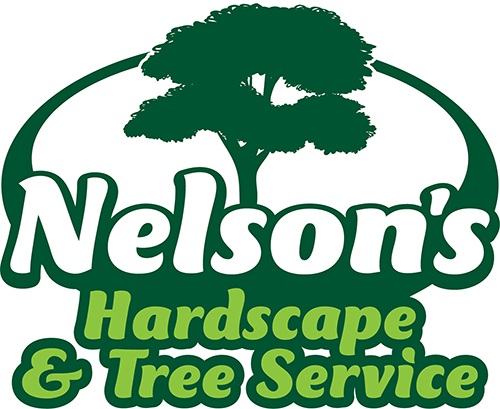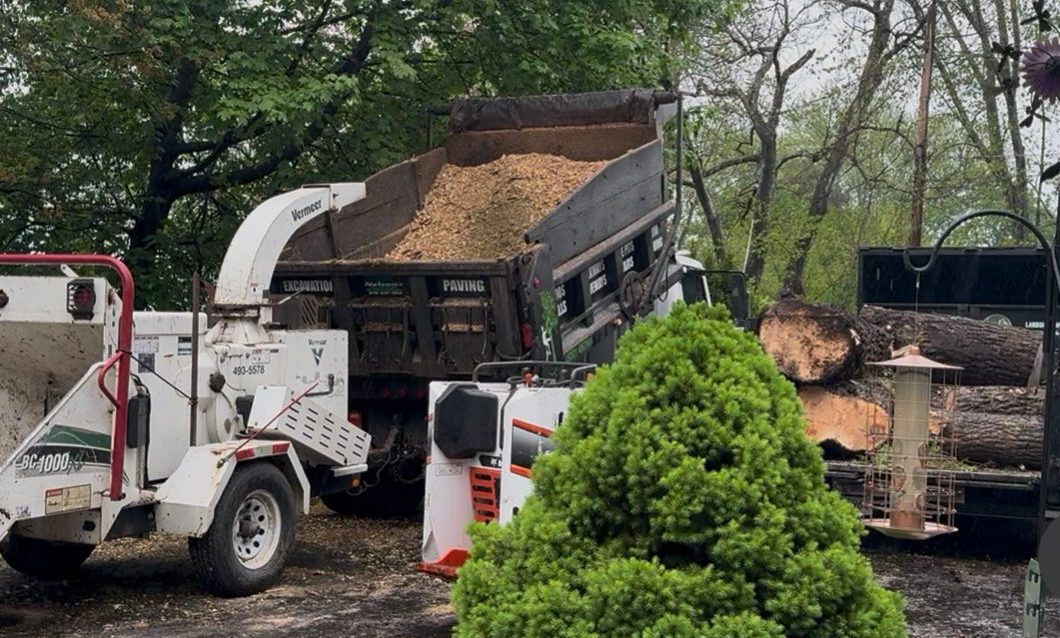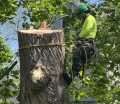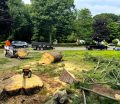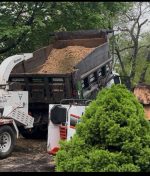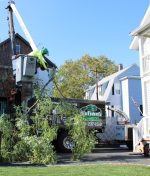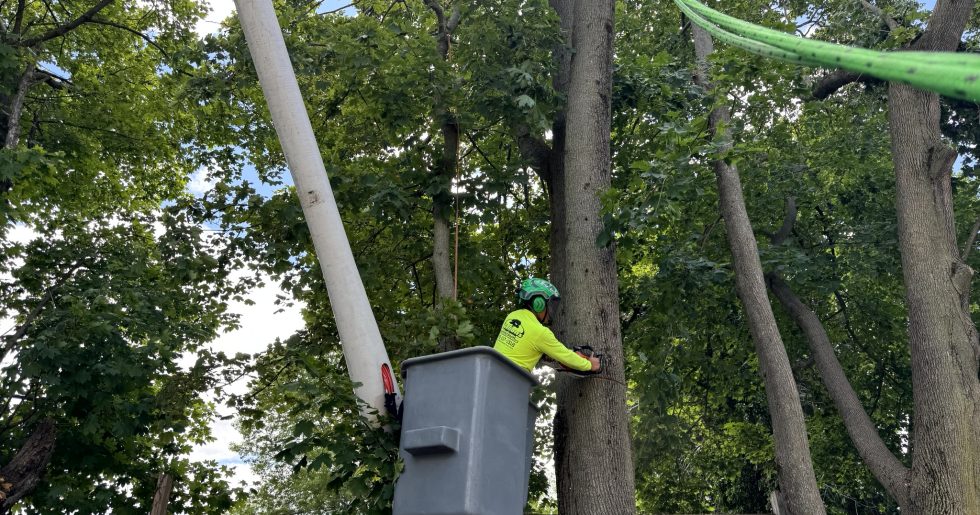
When most people think about environmental conservation, tree removal rarely comes to mind as a beneficial practice. However, strategic and responsible tree removal plays a crucial role in maintaining healthy ecosystems and promoting environmental sustainability. Understanding the benefits of tree removal can help property owners make informed decisions that actually support long-term environmental health rather than harm it.
Professional arborists and forest management experts, including those at Nelson’s Hardscape & Tree Service, recognize that selective tree removal is an essential tool for ecosystem management. Located at Lynn, MA, their certified professionals understand that not all tree removal is detrimental to the environment—when done correctly, it can significantly enhance forest health and biodiversity.
Understanding Strategic Tree Removal
Strategic tree removal differs significantly from clear-cutting or indiscriminate logging. This approach focuses on removing specific trees that may be:
- Diseased or infected with pathogens
- Overcrowding healthy specimens
- Creating safety hazards
- Invasive species threatening native flora
- Blocking essential sunlight from reaching understory plants
The key lies in understanding which trees to remove and when to remove them for maximum environmental benefit.
Key Environmental Benefits of Tree Removal
1. Disease Prevention and Forest Health
One of the most significant environmental benefits involves preventing the spread of tree diseases and pests. Infected trees act as breeding grounds for harmful insects and pathogens that can devastate entire forest ecosystems.
Common threats that require removal include:
- Emerald Ash Borer infestations
- Dutch Elm Disease
- Oak Wilt
- Pine Beetle damage
- Fungal infections like Fire Blight
By removing infected specimens promptly, forest managers can prevent these issues from spreading to healthy trees, preserving the overall ecosystem integrity.
2. Promoting Biodiversity Through Selective Removal
Overcrowded forests often struggle to support diverse plant and animal life. When trees compete intensely for resources, many species suffer. Strategic removal creates space for:
- Native wildflowers and understory plants
- Shrubs that provide food for wildlife
- Nesting areas for various bird species
- Grazing areas for forest animals
- Room for young, healthy trees to establish
Professional tree removal services understand how to create these beneficial gaps without disrupting the forest ecosystem.
Professional arborist assessing forest health for strategic tree removal
🌳 Expert Tip: Timing Matters
The best time for environmental tree removal is during dormant seasons (late fall to early spring) when wildlife activity is minimal and tree stress is reduced. This timing minimizes ecosystem disruption while maximizing benefits.
3. Improving Air and Water Quality
While it may seem counterintuitive, removing certain trees can actually improve air and water quality in specific situations:
Air Quality Benefits:
- Removing trees with high pollen production helps those with allergies
- Eliminating diseased trees reduces spore dispersal
- Creating proper spacing improves air circulation
- Reducing overcrowding decreases mold and mildew issues
Water Quality Improvements:
- Better water infiltration in properly spaced forests
- Reduced competition allows remaining trees to filter water more effectively
- Prevention of erosion through strategic removal near waterways
4. Fire Prevention and Safety
In fire-prone areas, strategic tree removal creates natural firebreaks and reduces fuel loads. This approach:
- Protects surrounding healthy forests
- Reduces the risk of catastrophic wildfires
- Creates defensible spaces around communities
- Allows for controlled burns when appropriate
Emergency tree service becomes crucial during storm seasons when damaged trees pose immediate fire risks.
Environmental Benefits Comparison
| Benefit Category | Before Removal | After Strategic Removal |
|---|---|---|
| Biodiversity | Limited species variety | Increased plant & animal diversity |
| Forest Health | Disease spread risk | Contained, healthy ecosystem |
| Resource Competition | Intense competition | Balanced resource distribution |
| Fire Risk | High fuel load | Reduced catastrophic fire risk |
Sustainable Removal Practices
Planning and Assessment
Professional tree removal begins with comprehensive assessment:
- Tree health evaluation
- Ecosystem impact analysis
- Wildlife habitat considerations
- Soil and water table effects
- Long-term forest management goals
Proper Equipment and Techniques
Modern tree removal employs environmentally conscious methods:
- Precision cutting to minimize soil disturbance
- Stump grinding to prevent regrowth issues
- Wood chipping and disposal for recycling
- Careful debris management to protect surrounding vegetation
Professional tree cabling may be used as an alternative to removal when trees can be safely preserved.
The Role of Professional Assessment
now flows as comprehensive paragraphs that explain the importance of certified arborists in making environmental decisions, covering their assessment process, alternative preservation methods, and the scientific approach they take to tree management decisions.
Post-Removal Environmental Benefits
has been rewritten as detailed paragraphs that explore both immediate and long-term environmental advantages, explaining the cascading effects of strategic removal on forest ecosystems, soil health, and overall environmental resilience.
Both sections maintain the professional tone and provide valuable information while flowing naturally as paragraphs rather than bullet-pointed lists, making them more engaging and readable for your blog audience.
Myth vs. Fact: Tree Removal and Environment
Fact: Strategic removal can significantly improve ecosystem health and biodiversity
Fact: Overcrowded forests often have reduced biodiversity and increased disease risk
Fact: Proper removal creates firebreaks and reduces overall wildfire danger
When to Consider Professional Tree Removal
Warning Signs That Indicate Removal Benefits:
- Visible disease symptoms (cankers, unusual leaf drop, fungal growth)
- Structural instability after storms
- Overcrowding preventing healthy growth
- Invasive species threatening native plants
- Trees interfering with essential infrastructure
Assessment Factors:
- Tree species and age
- Overall forest health
- Wildlife habitat needs
- Property safety concerns
- Long-term land management goals
Professional services also provide storm cleanup when weather events create immediate environmental and safety concerns.
Frequently Asked Questions
Q: How does tree removal benefit the environment when trees clean the air?
A: While healthy trees do clean the air, diseased or overcrowded trees often contribute less to air quality while consuming resources that could support healthier specimens. Strategic removal allows the remaining healthy trees to thrive and actually increase their environmental benefits.
Q: Will removing trees harm local wildlife?
A: When done properly with professional assessment, strategic tree removal creates diverse habitats that support more wildlife species than overcrowded forests. The key is timing removal appropriately and maintaining adequate tree cover.
Q: How do I know if a tree should be removed for environmental reasons?
A: Professional arborists can assess trees for disease, structural integrity, and ecosystem impact. Signs include visible decay, pest infestation, overcrowding, or if the tree is an invasive species threatening native plants.
Q: What happens to the wood after environmentally-motivated tree removal?
A: Responsible removal services recycle wood through chipping, lumber production, or biomass energy. This ensures that even removed trees continue contributing to environmental sustainability through proper waste management.
Conclusion
The environmental benefits of tree removal, when conducted strategically by qualified professionals, extend far beyond what most people realize. From preventing disease spread and promoting biodiversity to reducing fire risks and improving overall forest health, responsible tree removal serves as a vital tool in environmental stewardship.
Understanding these benefits of tree removal empowers property owners to make decisions that truly support long-term environmental health. The key lies in working with certified professionals who can assess each situation individually and recommend the most environmentally beneficial approach.
Ready to Improve Your Property’s Environmental Health?
Get professional assessment from certified arborists who understand the environmental benefits of strategic tree removal.
Nelson’s Hardscape & Tree Service – 17 Bulfinch St, Lynn, MA 01904
